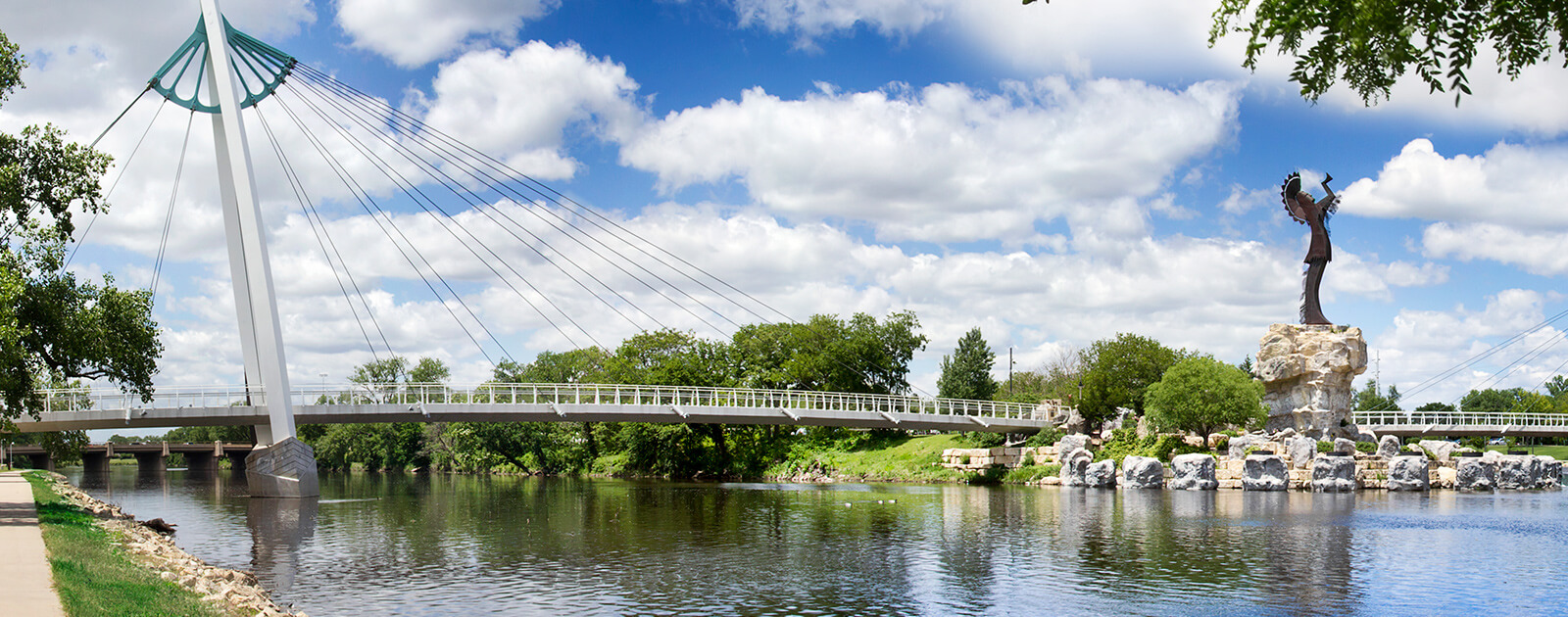
The Keeper of the Plains proudly stands at the confluence of the Big and Little Arkansas rivers, hands raised high in supplication. Since the sculpture’s installation in 1974 to commemorate the U.S. Bicentennial, it has become a symbol for the City of Wichita and a tribute to the Native American tribes who gather at this sacred headland. The Keeper was the focal point of an eight-year, $20 million restoration and river beautification project completed in May 2007. Our challenge: there is no one history of the Native American tribes. This public art display simplifies and tells these diverse stories in a true, authentic manner.
The exhibit, situated on sacred ground, immerses visitors in the lives, beliefs and practices of the nomadic Plains Indians. Visitors can follow Greteman Group-designed wayfinding along serpentine paths or cross graceful bow-and-arrow-inspired, cable-stay walking bridges over the rivers to the Keeper of the Plains Plaza. The sounds of Native American drumming, rattling and chants echo in the large flagstone plaza ringed by hand-chipped limestone walls and boulders. Enter between prayer poles to 70-foot-long curved limestone walls.
Greteman Group-designed environmental graphics along the walls include everything from a teepee with traditional Plains tribe icons to a dream shield. Photographs laser-etched into granite personalize the exhibit with the noble visages of the men and women who made history here. Metalwork and limestone sculptures crafted by Todd Whipple and Chris Brunner showcase workday tools, weapons, lodging and ornamentation. Eagles, bison, horses and turtles – all significant to the culture – figure prominently.
A map shows almost 30 tribes from the Dakotas down to Texas who were drawn to the rivers’ confluence for powwows and trading. Fire drums located on boulders at the foot of the Keeper dramatically light the night. A mist rises up from a pause point that leads down to the water’s edge. Plantings of sage, bottlebrush, medicinal herbs, prairie grasses, yuccas and cactus further create a sense of place and time.
The 44-foot Cor-Ten steel sculpture now stands elevated on a 30-foot rock promontory surrounded by four quadrants representing the elements of water, fire, air and earth. It is the most visible and beloved of Wichita’s icons. And now the most visited. This dynamic new space has re-energized a previously neglected area, drawing thousands to one of the city’s most scenic spots, inviting visitors to contemplate and appreciate the area’s rich heritage. Seeing all the landscaping in place, the families interacting with the installation and the grandeur of the finished project, we believe the Keeper’s creator Blackbear Bosin would have been proud of the enhancements.